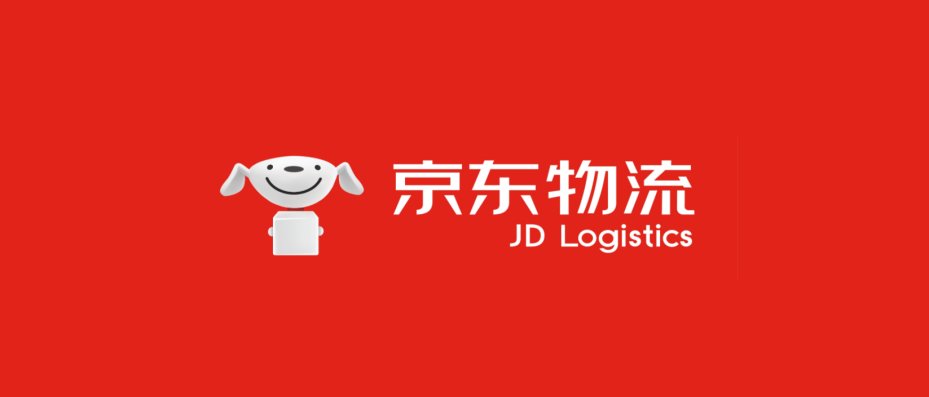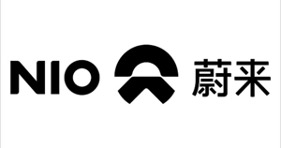
$JD Health and $BABA AliHealth
$JD Health and $BABA Ali Health are $JD and $BABA's newest competition ground and the two biggest online medical platforms in China . Here is a thread on the things you need to know for $JD health and $Ali health.
Let’s get started! 👇👇
$JD Health and $BABA Ali Health are $JD and $BABA's newest competition ground and the two biggest online medical platforms in China . Here is a thread on the things you need to know for $JD health and $Ali health.
Let’s get started! 👇👇
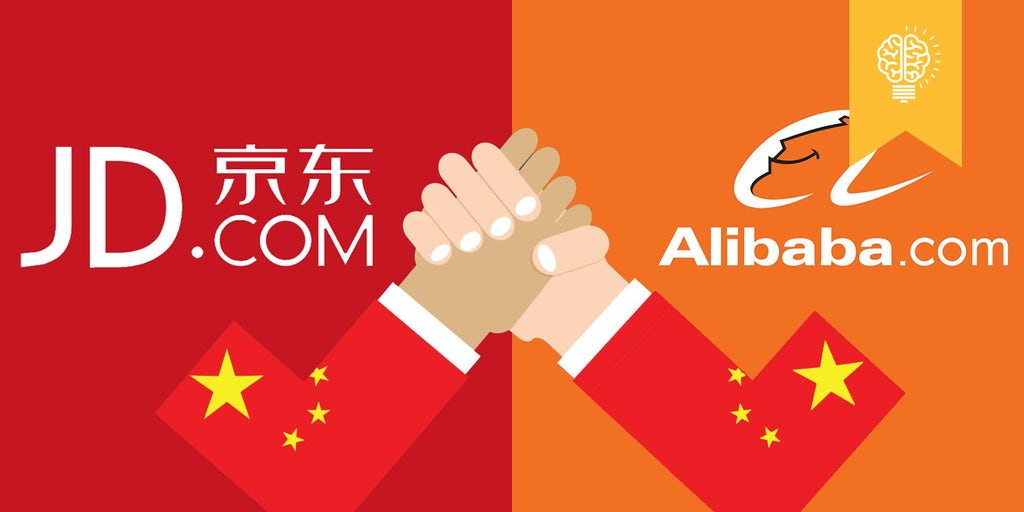
1. Problem
China have MANY medical problems. These include: poor structure of the Chinese medical system, inadequate/unequal resources, long waiting time, expensive medical services, sub-par medical quality and insufficient or unskilled medical staff.
China have MANY medical problems. These include: poor structure of the Chinese medical system, inadequate/unequal resources, long waiting time, expensive medical services, sub-par medical quality and insufficient or unskilled medical staff.
2. Long waiting time
It is very inconvenient to visit a doctor in China unless you go to expensive private ones. There is not a clear distinction between a GP and a specialist, causing many elderlies, to crowd the hospital even when they only have a small medical issue.
It is very inconvenient to visit a doctor in China unless you go to expensive private ones. There is not a clear distinction between a GP and a specialist, causing many elderlies, to crowd the hospital even when they only have a small medical issue.

2.1 A typical hospital visit in China may take up to 2-3 hours, half a day, or even a full day. You can basically image a Chinese hospital is like your favorite next door grocery stores constantly at 120%-200% capacity. 
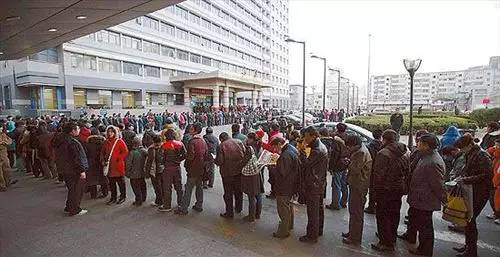
3. Medical Expenditure
Although the Chinese medical system has been improving, it is still unorganised and inefficient, causing medical services/medicine to be ‘expensive’, especially to low-income earners in China. Medical service is more expensive in China than the US % wise.
Although the Chinese medical system has been improving, it is still unorganised and inefficient, causing medical services/medicine to be ‘expensive’, especially to low-income earners in China. Medical service is more expensive in China than the US % wise.
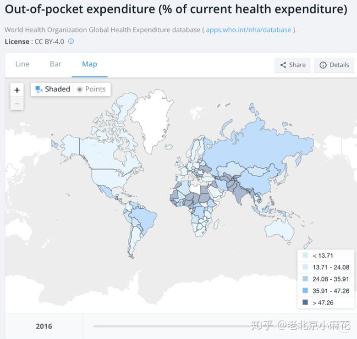
4. Unequal Medical Resources
Third level grade A hospitals are the best hospitals in China. The graph below shows an uneven distribution of medical resources between different regions, especially between cities and rural areas, in China.
Third level grade A hospitals are the best hospitals in China. The graph below shows an uneven distribution of medical resources between different regions, especially between cities and rural areas, in China.
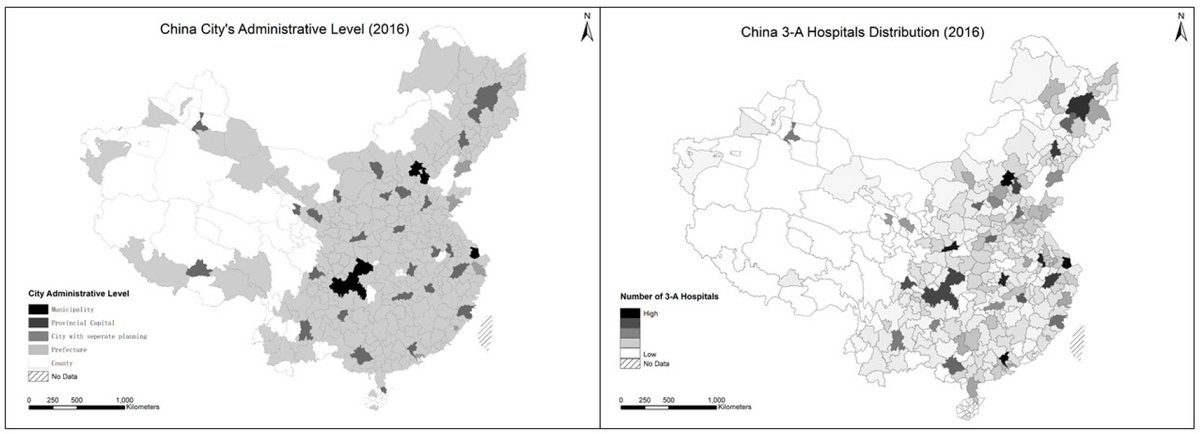
4.1 A sad fact: 5.14 million Chinese are in poverty because of spending all their money on medical treatment and medicine.
5. Solution
Both $JD Health and $BABA AliHealth offer a solution to these problems. $JD health and $BABA AliHealth enable people to buy medicine, have doctor consultations and regular checkups ALL ONLINE. Thereby, saving BOTH time and cost for their users.
Both $JD Health and $BABA AliHealth offer a solution to these problems. $JD health and $BABA AliHealth enable people to buy medicine, have doctor consultations and regular checkups ALL ONLINE. Thereby, saving BOTH time and cost for their users.
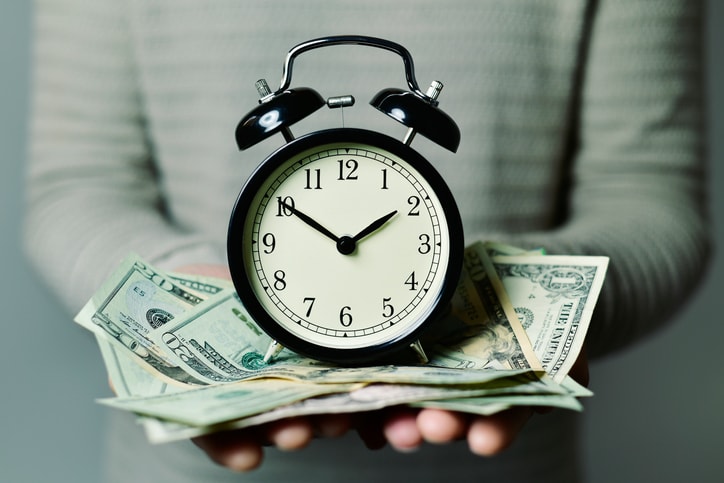
6. $JD Health
$JD Health aims to become the trusted ‘Chief Health Manager’ for their users. $JD Health seeks to build an online healthcare platform that provides medicine through $JD’s robust supply chain alongside with healthcare services that covers a user’s full life span.
$JD Health aims to become the trusted ‘Chief Health Manager’ for their users. $JD Health seeks to build an online healthcare platform that provides medicine through $JD’s robust supply chain alongside with healthcare services that covers a user’s full life span.
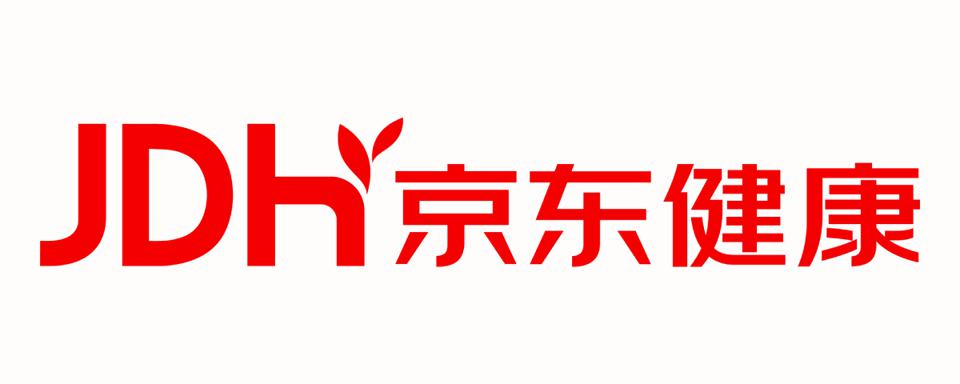
6.1 As of December 2020, $JD Health have 20 million stock keeping unit (SKU), with over 12 thousand third party stores. $JD Health’s ‘JD medicine delivery’ covers over 300 cities in China, providing 24 hours delivery, same day delivery, 30 mins delivery and 24/7 delivery.
7. $BABA AliHealth
$BABA AliHealth seeks to offer an online medical platform that provides ‘Double H’, Health and Happiness, to their users. $BABA AliHealth provides an integrated solution covering all online medical service and medicine needs.
$BABA AliHealth seeks to offer an online medical platform that provides ‘Double H’, Health and Happiness, to their users. $BABA AliHealth provides an integrated solution covering all online medical service and medicine needs.
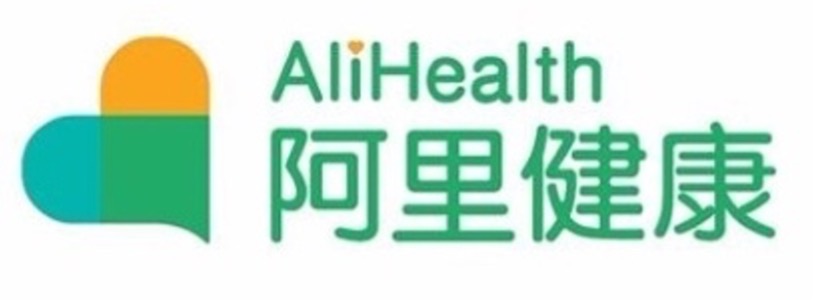
7.1 There are over 23 thousand third party stores on $BABA AliHealth with over 33 million SKU. $BABA AliHealth provides 24-hour delivery in 100 core cities in China.
8. Business model
$JD Health and $BABA AliHealth have a similar business model, where they offer B2B, B2C and O2O services (Online to Offline commonly refers to emergency service, and 24/7 delivery), on their platforms.
$JD Health and $BABA AliHealth have a similar business model, where they offer B2B, B2C and O2O services (Online to Offline commonly refers to emergency service, and 24/7 delivery), on their platforms.

8.1 Both platforms have their own first party stores (JD pharmacy and AliHealth pharmacy) and other 3rd party stores (marketplace). They also provide online consultation, chronic disease management, general practice, and consumer health care services. 
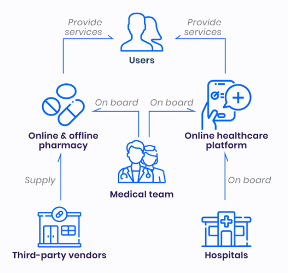
9. Total Addressable Market
China’s total medical expenses are expected to grow from $7.254 to $17.616 trillion RMB ($2.73 trillion USD) from 2020-2030, a CAGR of 9.28%. The online pharmacy % of total medical expenses is expected to grow from 1.6% to 6.8% from 2019-2030
China’s total medical expenses are expected to grow from $7.254 to $17.616 trillion RMB ($2.73 trillion USD) from 2020-2030, a CAGR of 9.28%. The online pharmacy % of total medical expenses is expected to grow from 1.6% to 6.8% from 2019-2030
9.1 . This represents a market opportunity of 1.2 trillion RMB (185 billion USD). This shows the magnitude of the medical market and the potential of telehealth in China. 
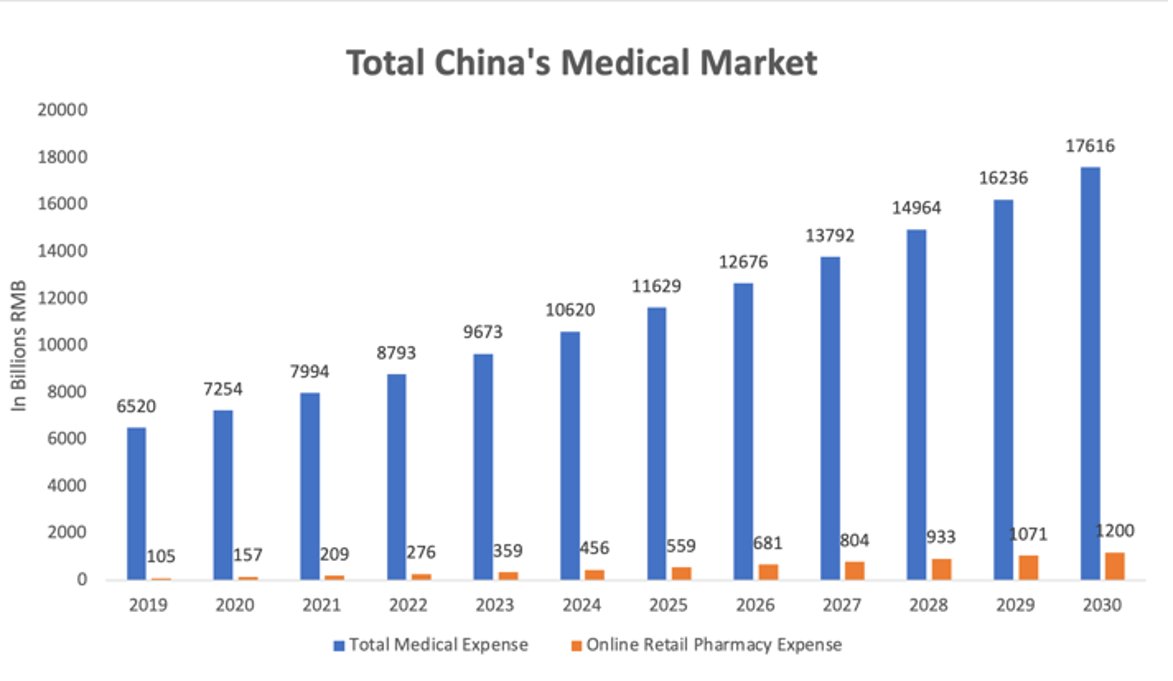
10. Chinese Government Support
In August 2019, the Chinese Medicine Management Law, abolishes the restriction on third-party online platform ($JD Health and $BABA AliHealth) to sell prescribed medicine. Online platform can sale prescriptions now if they hold pharmacy license
In August 2019, the Chinese Medicine Management Law, abolishes the restriction on third-party online platform ($JD Health and $BABA AliHealth) to sell prescribed medicine. Online platform can sale prescriptions now if they hold pharmacy license
10.1 In 2020, the China National Health Security Administration has released a new guidance to actively promote online telehealth services and to formally include telehealth services as part of the China ‘Healthcare Security’, which all Chinese enjoys. These actions the Chinese
11. Covid-19’s tailwind
Covid has created a lot of demand and awareness for Telehealth in China. $JD Health has captured more online pharmacy market share than the 4 biggest pharmacies, Yixintang, LBX, Yifeng and DaShenLin, in China during Covid-19.
Covid has created a lot of demand and awareness for Telehealth in China. $JD Health has captured more online pharmacy market share than the 4 biggest pharmacies, Yixintang, LBX, Yifeng and DaShenLin, in China during Covid-19.
11.1 Moreover, $JD Health’s and $BABA AliHealth’s YoY growth rate were between 60-80% compare to the other four pharmacies at around 20-35% during Covid.
Interesting fact: $JD Health’s $JD pharmacy only took 3 years after its launch to become the largest pharmacy in China.
Interesting fact: $JD Health’s $JD pharmacy only took 3 years after its launch to become the largest pharmacy in China.
11.2 One of $JD Health and $BABA AliHealth’s biggest competitor, Ping An Good Doctor’s app registration number has 10x and average daily doctor consultation 9x compare to pre-covid levels. $JD Health have more than 120k daily consultation during the peak of covid,
and $BABA AliHealth has 400k visitors to one of their online free clinic websites within the first 24 hours of operation. All these shows how Covid has pushed the telehealth industry to grow faster in China. 

12. Aging Population
China’s population has been aging and will continue to age for the coming decades. An aging population will likely increase medical needs and worsen China’s medical issues, thereby facilitating telehealth growth.
China’s population has been aging and will continue to age for the coming decades. An aging population will likely increase medical needs and worsen China’s medical issues, thereby facilitating telehealth growth.
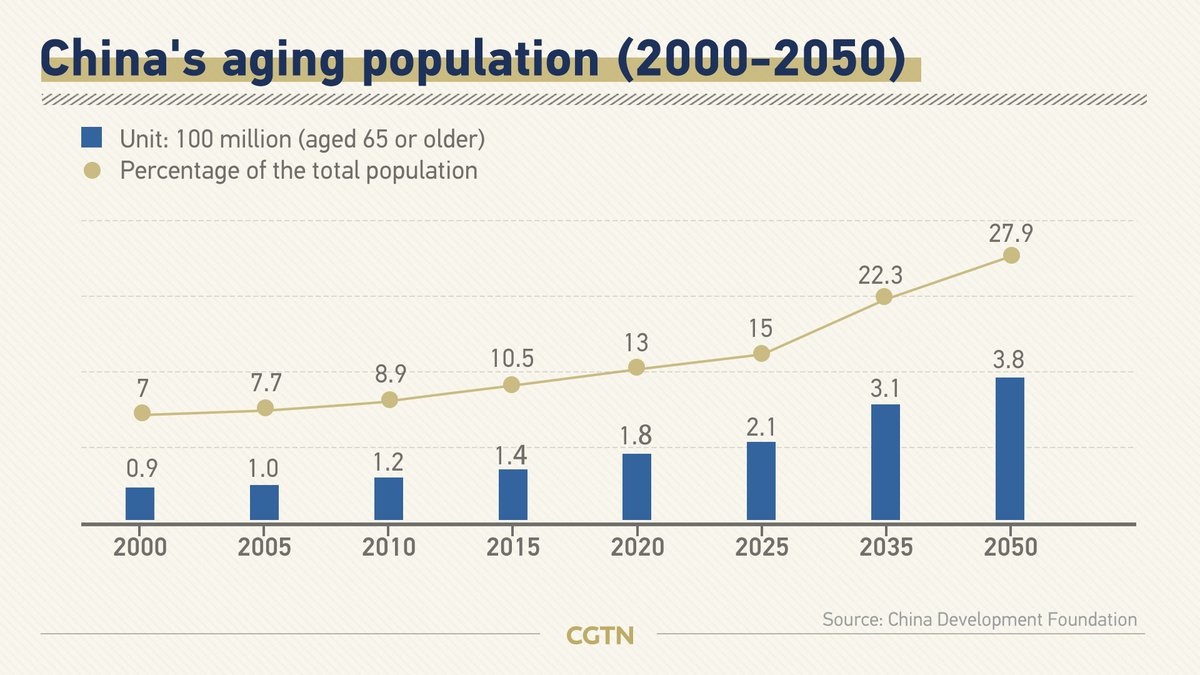
13.Internet penetration/users
As of 2020, China have almost 1 billion internet users with a penetration rate of 64.5%. All these internet users may be potential users of telehealth services, pointing to telehealth’s potential in China. CONTINUE
As of 2020, China have almost 1 billion internet users with a penetration rate of 64.5%. All these internet users may be potential users of telehealth services, pointing to telehealth’s potential in China. CONTINUE
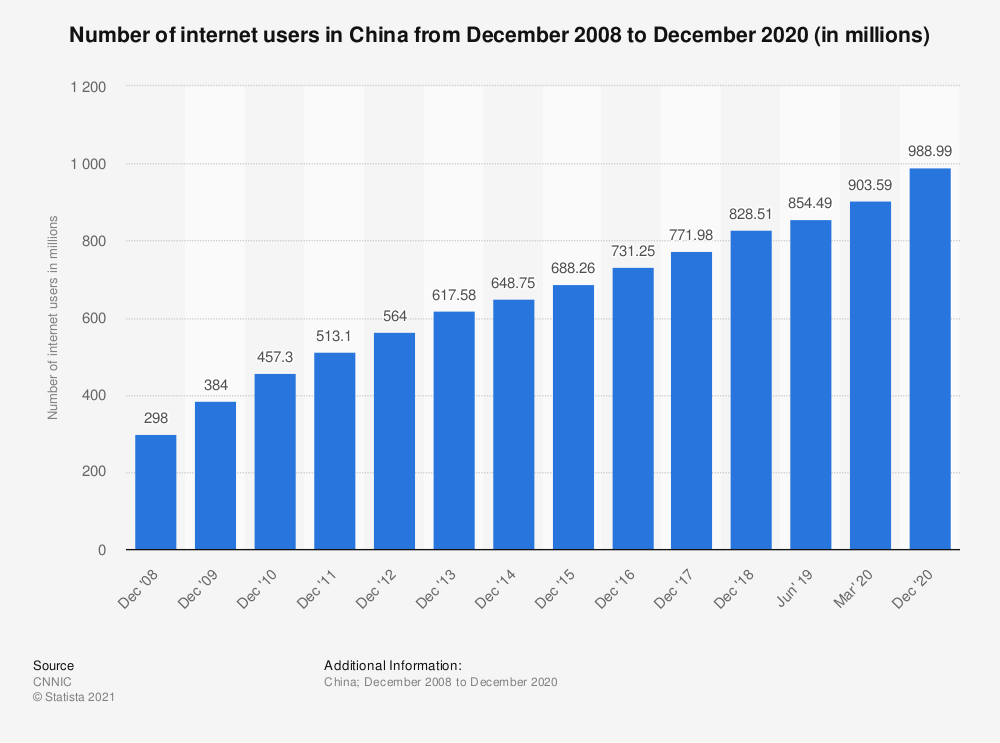
14. Cheaper Medicine Prices
$JD Health and $BABA AliHealth generally offers cheaper medicine prices compare to offline’s ‘suggested retail price’. This is because both $JD and $BABA can enjoy cheaper prices directly from upstream suppliers due to their E-Commerce dominance.
$JD Health and $BABA AliHealth generally offers cheaper medicine prices compare to offline’s ‘suggested retail price’. This is because both $JD and $BABA can enjoy cheaper prices directly from upstream suppliers due to their E-Commerce dominance.
15. An Example
‘Weikangling Jiaonang’, a medicine for stomachache, has a suggested retail price of $37.4 RMB. On $BABA AliHealth, it only costs $28.4 RMB.
‘Weikangling Jiaonang’, a medicine for stomachache, has a suggested retail price of $37.4 RMB. On $BABA AliHealth, it only costs $28.4 RMB.
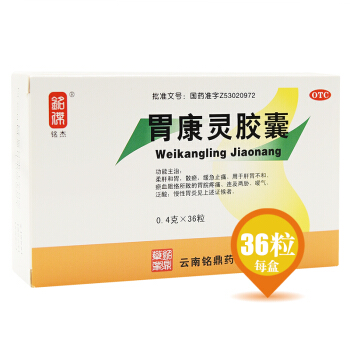
16. Solving the problem of ‘unequal’ medical resources.
More than half of the medicine purchased on $JD Health have been delivered to 3rd-tiered cities , indicating $JD Health (and similarly $BABA AliHealth’s) importance to deliver medical resources to less benefitted areas.
More than half of the medicine purchased on $JD Health have been delivered to 3rd-tiered cities , indicating $JD Health (and similarly $BABA AliHealth’s) importance to deliver medical resources to less benefitted areas.
17. App Store Reviews
Both $JD Health and $BABA AliHealth have a high app store review but $BABA AliHealth have more reviews and more downloads over $JD Health.
Both $JD Health and $BABA AliHealth have a high app store review but $BABA AliHealth have more reviews and more downloads over $JD Health.
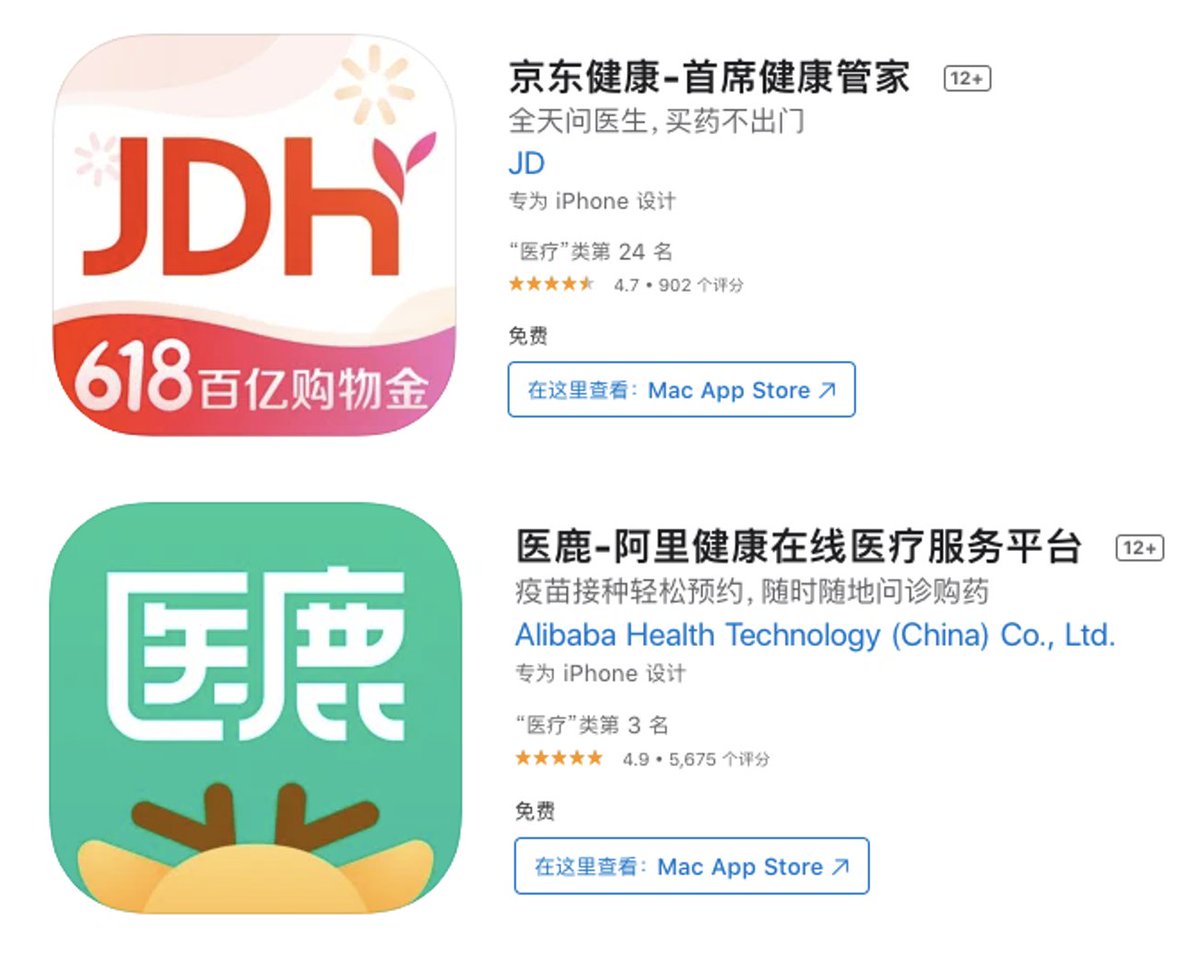
18. Online Pharmacy Market Share
$JD Health and $BABA AliHealth are the two biggest online pharmacies in China by market share. The 3rd place, Ping An Good Doctor, is considerably behind.
$JD Health and $BABA AliHealth are the two biggest online pharmacies in China by market share. The 3rd place, Ping An Good Doctor, is considerably behind.
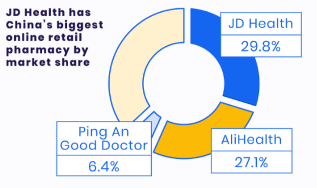
19.Revenue Breakdown
Both $JD Health and $BABA AliHealth earns their revenue primarily from online direct sales of medicine and medical related products. AliHealth have a higher revenue from marketplace because more third-party stores are on $BABA Health.
Both $JD Health and $BABA AliHealth earns their revenue primarily from online direct sales of medicine and medical related products. AliHealth have a higher revenue from marketplace because more third-party stores are on $BABA Health.
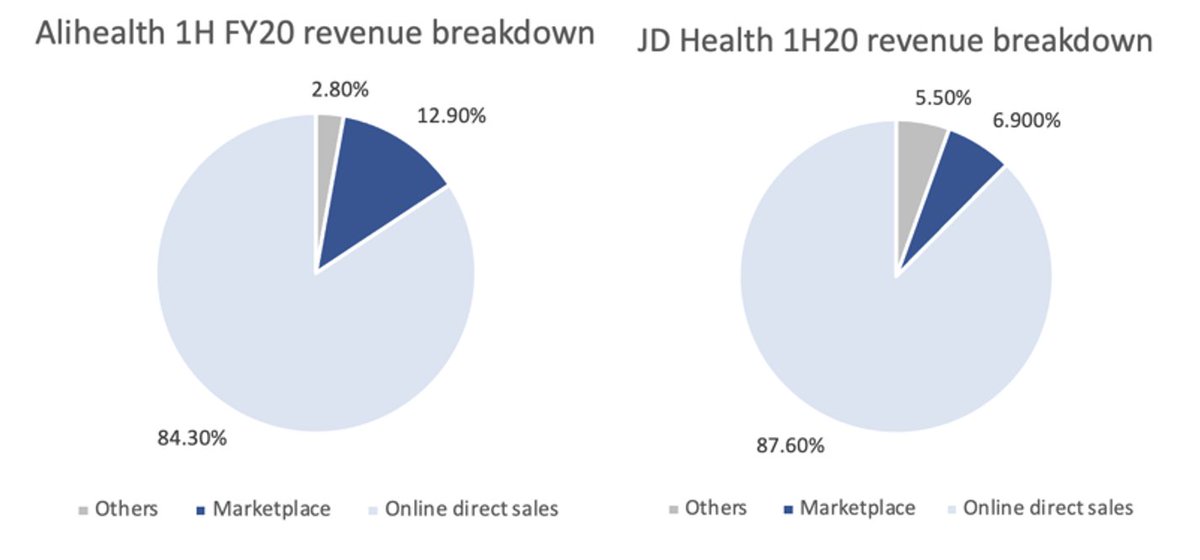
20. Both $JD Health and $BABA AliHealth are still essentially ‘online pharmacies’ not ‘online hospitals’. They still have a huge room to improve on to provide comprehensive medical services.
21. Online direct sales – breakdown
Interestingly, medicine makes up less than 30% of $JD Health’s direct sales revenue and non-medicine such as healthcare products, supplements, healthcare equipment, rehab and health monitoring equipment make up 70%.
Interestingly, medicine makes up less than 30% of $JD Health’s direct sales revenue and non-medicine such as healthcare products, supplements, healthcare equipment, rehab and health monitoring equipment make up 70%.
21.1 For $BABA AliHealth, medicine takes up around 61.7% of direct sales revenue whereas other health care products take up around 38.3%, indicating the different revenue source for $BABA AliHealth and $JD Health now.
21.2 A thing to note is that the healthcare products market is estimated to be around 150 billion RMB (23.23 billion USD), whereas the medicine market around 2.1 trillion RMB (330 billion USD) (60% for prescribed medicine and 40% unprescribed).
21.3 Furthermore, the online penetration rate for healthcare products is 22% compare to medicine of less than 5%. Therefore, both companies should (and will) focus more on medicine in the future.
21.4 A side note: as shown by $JD Health and $BABA AliHealth’s pass records, prescribed medicine has a lower margin than non-prescribed medicine, which has a lower margin than non-medicine healthcare products.
22. Annual Active Users - $BABA vs $JD
As of Q2 2020, $BABA has an AAU of 742 million, whereas $JD only has 417 million, a 43.8% difference, meaning that $BABA AliHealth has a bigger pool of customers to draw from compare to $JD Health.
As of Q2 2020, $BABA has an AAU of 742 million, whereas $JD only has 417 million, a 43.8% difference, meaning that $BABA AliHealth has a bigger pool of customers to draw from compare to $JD Health.
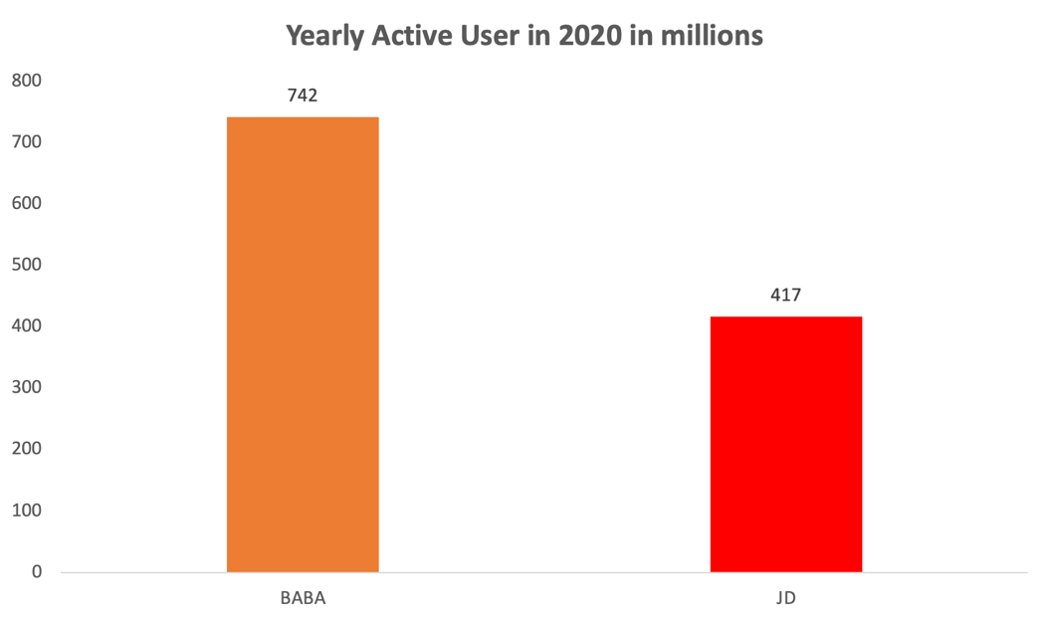
23. Annual Active Users - $BABA AliHealth vs $JD Health
In 2020, $JD health has a total AAU of 89 million people, an increase of 33.7 million people (60% annual growth). Whereas, $BABA AliHealth’s medical platform has a higher total annual active user oat 280 million people.
In 2020, $JD health has a total AAU of 89 million people, an increase of 33.7 million people (60% annual growth). Whereas, $BABA AliHealth’s medical platform has a higher total annual active user oat 280 million people.
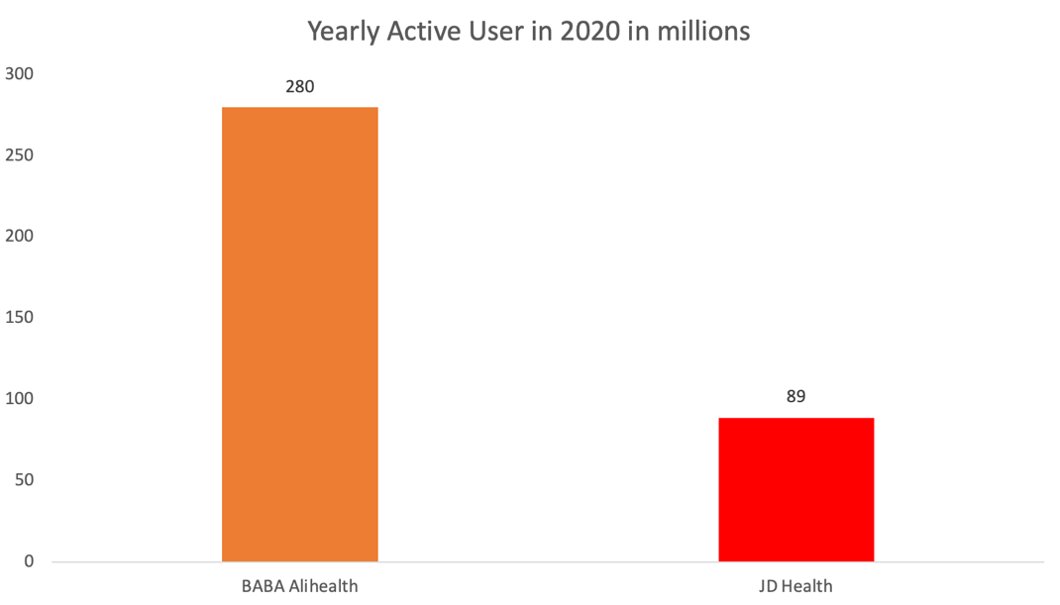
24. Number of Doctors
As of September 2020, there are 65k doctors on $JD health, whereas $BABA AliHealth have around 60k doctors. $JD Health’s numbers of doctors have double from June 2020 to September 2020, showing the increasing demand of online consultation.
As of September 2020, there are 65k doctors on $JD health, whereas $BABA AliHealth have around 60k doctors. $JD Health’s numbers of doctors have double from June 2020 to September 2020, showing the increasing demand of online consultation.

25. Side note: Ping An Good Doctor ($1833.HK) is the biggest online doctor consultation provider with a market share of 46% in terms of total conducted online doctor consultations, followed by $JD Health’s 5% and $BABA AliHealth’s 2%. 
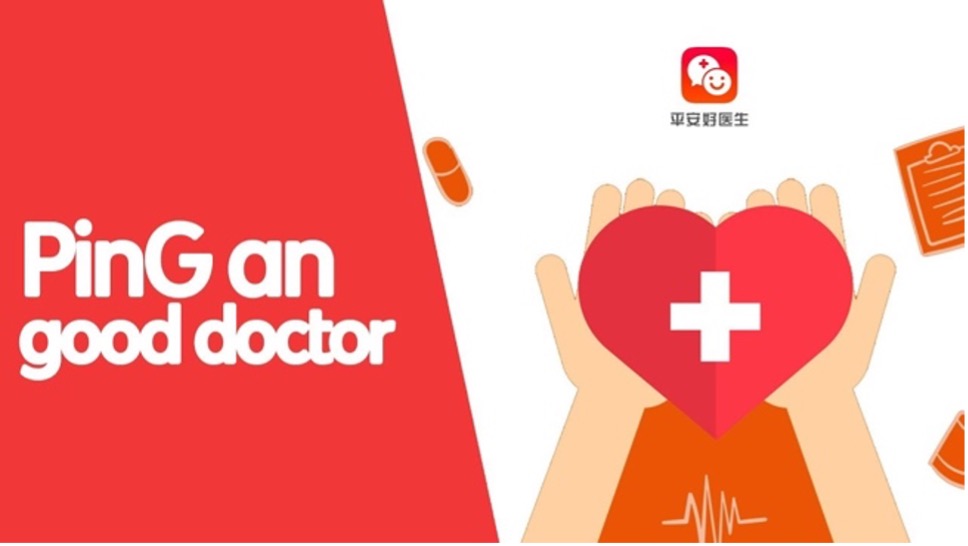
26. Ping An Good Doctor
Ping An Good Doctor is the third largest Telehealth platform in terms of market cap behind $JD health and $BABA AliHealth. Ping An Good Doctor is weaker in ‘online pharmacy’ because they do not have strong support from big Chinese E commerce players.
Ping An Good Doctor is the third largest Telehealth platform in terms of market cap behind $JD health and $BABA AliHealth. Ping An Good Doctor is weaker in ‘online pharmacy’ because they do not have strong support from big Chinese E commerce players.
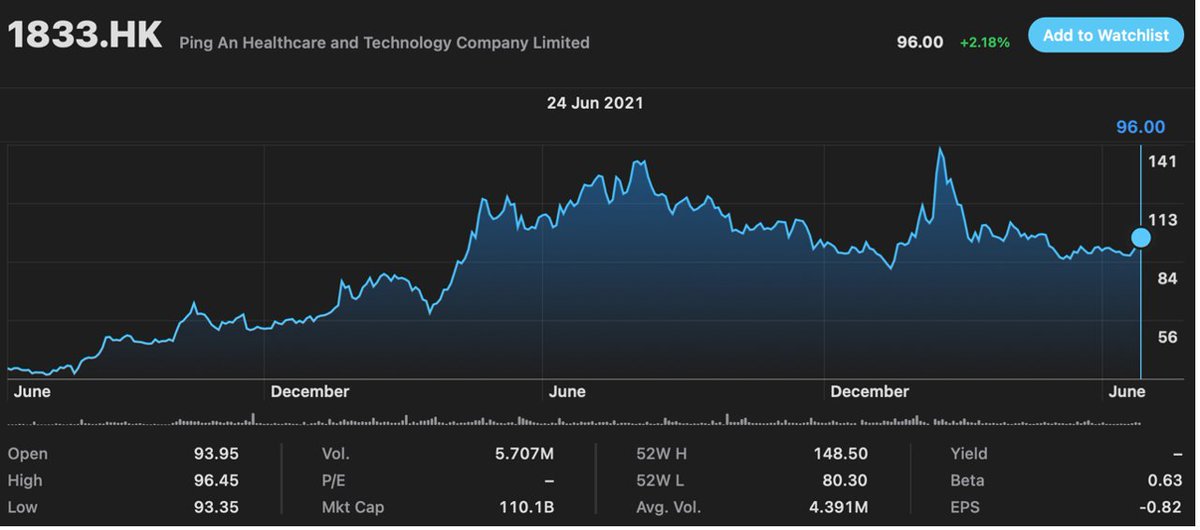
26.1 However, Ping An Good Doctor is a subsidiary of Ping An, which is the second biggest insurance company in China. Therefore, they are inherently better at providing healthcare services ($JD Health and $BABA AliHealth still needs to catchup in this department). 
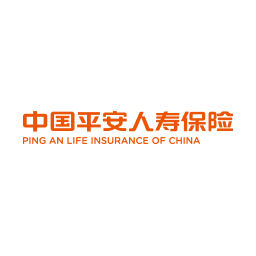
26.2 Ping An Good Doctor have better quality doctors as they mostly source their doctors from ‘third level A grade hospitals’. But, Ping An Doctors have less doctors than $JD Health and $BABA AliHealth, indicating the potential for $JD and AliHealth to grow in online consultation
27. Revenue
$JD Health’s has recorded a revenue of 19.38 billion RMB for 2020. $JD Health’s revenue has grown at a CAGR of 51.69% from 2017 to 2020. $BABA Health has recorded a revenue of 15.52 billion RMB from March 2020 to March 2021, a CAGR of 85.21% from 2017 to 2020.
$JD Health’s has recorded a revenue of 19.38 billion RMB for 2020. $JD Health’s revenue has grown at a CAGR of 51.69% from 2017 to 2020. $BABA Health has recorded a revenue of 15.52 billion RMB from March 2020 to March 2021, a CAGR of 85.21% from 2017 to 2020.
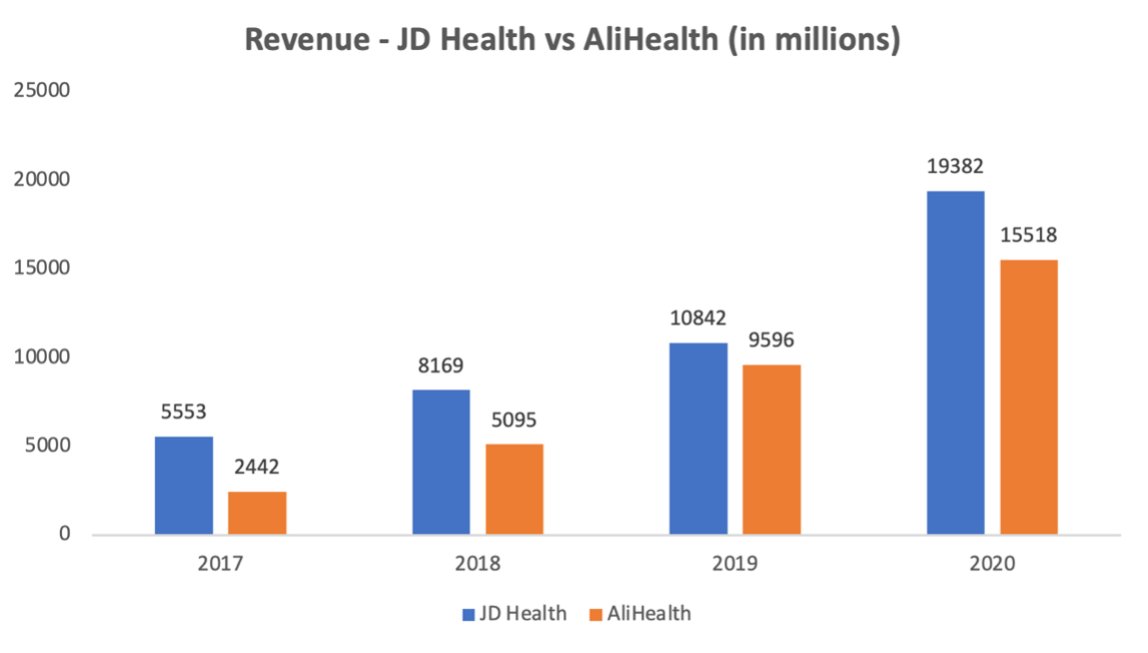
27.1 Although $BABA AliHealth seems to enjoy a higher revenue CAGR, it is due to $BABA AliHealth has started with a smaller based at 2 billion revenues compare to $JD Health’s 5 billion. In 2020, JD Health has grown 78.77% whereas $BABA AliHealth grown at 61.71%.
28. Although $BABA has more annual active users compare to $JD, $JD Health is better at realizing their users. $BABA has enjoyed the ‘first mover advantage’ for Chinese E-Commerce and $JD has been playing the ‘chasing game’. However, on telehealth and online pharmacy,
28.1 $BABA AliHealth does not have ‘first mover advantage’, as they both started at a similar starting line. CONTINUE
29. Gross Merchandise Value (GMV)
$BABA AliHealth has a bigger GMV at 55.4 billion RMB compare to $JD Health’s 22.4 billion RMB for 1H 2020. However, AliHealth’s lower revenue indicates that more GMV incurred by ‘third party stores’ sales on $BABA AliHealth compare to $JD Health
$BABA AliHealth has a bigger GMV at 55.4 billion RMB compare to $JD Health’s 22.4 billion RMB for 1H 2020. However, AliHealth’s lower revenue indicates that more GMV incurred by ‘third party stores’ sales on $BABA AliHealth compare to $JD Health
30. Gross Margin and Net Margin
$BABA AliHealth has a gross margin of 25.97% and $JD Health 25.26% for 2020 H1. Both have a net margin before extraordinary profit or loss of around 3-4%. Interestingly, this is slightly lower than the net margin of offline retailers as offline
$BABA AliHealth has a gross margin of 25.97% and $JD Health 25.26% for 2020 H1. Both have a net margin before extraordinary profit or loss of around 3-4%. Interestingly, this is slightly lower than the net margin of offline retailers as offline
30.1 retailers has a 10% lower cost of goods sold and 8% higher selling expenses. Nonetheless, $JD Health and $BABA AliHealth’s cost of goods sold should continue to decrease in the future. Both $JD Health and AliHealth have better turnover ratios compare to offline retailers. 
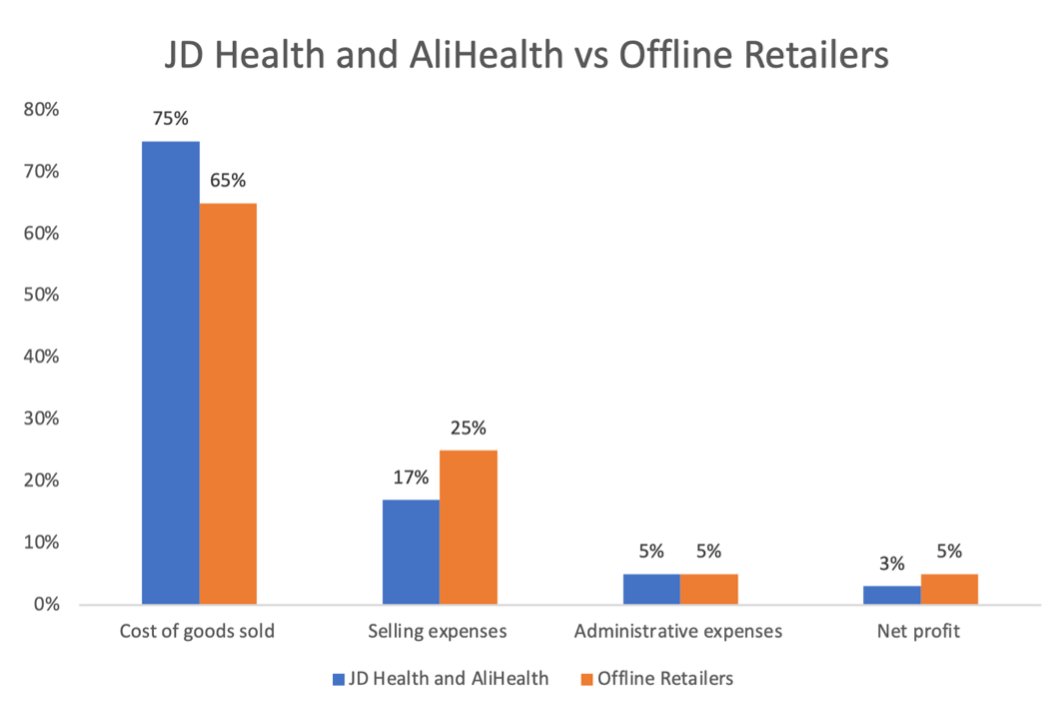
31. Cost Breakdown
For $JD Health, cost of goods sold takes up the majority at around 74.7%, storage and delivery cost at 10.4%, advertisement at 6.2%, R&D and administration at 4.2%, which result in a net profit margin of around 4%.
For $JD Health, cost of goods sold takes up the majority at around 74.7%, storage and delivery cost at 10.4%, advertisement at 6.2%, R&D and administration at 4.2%, which result in a net profit margin of around 4%.
31.1 Almost Identical Expenses - $JD Health and $BABA AliHealth has spent similar amount of their revenue on expenses. 
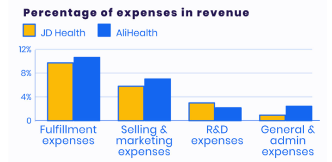
31.2 Both $JD Health and $BABA AliHealth are currently low margin businesses. However, margins should improve as they continue to expand into providing online medical services and earning more ‘platform fees.
32. Net Income
$JD Health has recorded a net income before extraordinary profit or loss of 748 million, whereas $BABA AliHealth 342.68 million. These numbers are still relatively small, as both companies are prioritizing acquiring market share and customers.
$JD Health has recorded a net income before extraordinary profit or loss of 748 million, whereas $BABA AliHealth 342.68 million. These numbers are still relatively small, as both companies are prioritizing acquiring market share and customers.
33. Valuation
$JD Health is currently valued at 363.34 billion HKD (46.81 billion USD) and $BABA AliHealth, 244.12Billion (31.45 billion USD). $JD Health has a P/S ratio of 18.75, EV/sales of 15.87 and $BABA AliHealth P/S ratio of 15.73 and EV/sales of 13.68.
$JD Health is currently valued at 363.34 billion HKD (46.81 billion USD) and $BABA AliHealth, 244.12Billion (31.45 billion USD). $JD Health has a P/S ratio of 18.75, EV/sales of 15.87 and $BABA AliHealth P/S ratio of 15.73 and EV/sales of 13.68.
33.1 For comparison, $TWTR trades at a P/S of 13.81 with a market cap of 54.47B, $LI at 14.74 and 27.75B, $DASH at 15.86 and 57.12B and $TDOC at 18.46 and 25.23B.
33.2 $JD Health and $BABA AliHealth is by no means trading at a ‘cheap valuation’, but whether it’s ‘expensive’ will depend on your time horizon, $JD Health and $BABA AliHealth continue revenue growth rate and what net margins they can ultimately achieve.
34. Conclusion
China’s telehealth and online pharmacy market is poise to grow in the coming decades due to greater convenience brought by the internet and Chinese medical system’s inherent problems. Both $JD Health and $BABA AliHealth (and also Ping An Good Doctors) have
China’s telehealth and online pharmacy market is poise to grow in the coming decades due to greater convenience brought by the internet and Chinese medical system’s inherent problems. Both $JD Health and $BABA AliHealth (and also Ping An Good Doctors) have
34.1 position them well to ride the ongoing digitalization trend with a big runway in front of them.
$JD Health and $BABA AliHealth are still largely ‘online pharmacy’ now rather than a comprehensive ‘online hospital/telehealth platform’ like Ping An Good Doctor.
$JD Health and $BABA AliHealth are still largely ‘online pharmacy’ now rather than a comprehensive ‘online hospital/telehealth platform’ like Ping An Good Doctor.
34.2 $BABA AliHealth and $JD Health have many existing customers from $BABA and $JD to draw from to become a successful medical platform. $JD Health has the advantage of $JD’s logistics network but $BABA AliHealth has been catching up.
34.3 Overtime, given the similarity of the $JD Health and $BABA AliHealth, in my respective opinion, I believe both are likely to succeed. Given the Chinese government attitude towards monopoly, there will most likely be at least, 2-3 major online telehealth platforms.
35. Thank you for reading this thread, I hope you have learnt one or two things more on $JD Health and $BABA AliHealth. If you like this thread, please consider liking it and retweeting it! I would really appreciate it! Please also drop a comment if you have anything to add!
36. If you like this content, please consider following me at @Joshuatai0427, where I regularly post threads like this on exciting new companies. My next deep dive should be on $DADA ( $JD owned 47% of it) and a comprehensive breakdown of $BABA. Thank you very much!
Tagging some $JD and $BABA bull and people who may be interested in this thread on $JD Health and $BABA AliHealth!
@daniel_toloko @TanArrowz @DennisHong17 @jablamsky @Matematikern3 @TanArrowz @EugeneNg_VCap @BuyandHoldd @FinanceGhost @Krevix @TomInvesting @MT_Capital1
@daniel_toloko @TanArrowz @DennisHong17 @jablamsky @Matematikern3 @TanArrowz @EugeneNg_VCap @BuyandHoldd @FinanceGhost @Krevix @TomInvesting @MT_Capital1
@Innovestor_ @Gambiste1 @thotbx @paul_essen @dofornop @SlingshotCap @mukund @LiviamCapital @RihardJarc
Would really appreciate any feedback, comments, insights from you! Thank you very much for your time and support!
Would really appreciate any feedback, comments, insights from you! Thank you very much for your time and support!
P.S. Special thanks to @ATSinvest for pointing out that $BABA owns 33% of Alihealth & $JD owns 67% of JD health, my bad for missing that crucial information.
• • •
Missing some Tweet in this thread? You can try to
force a refresh



